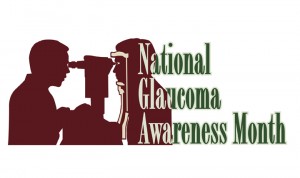 Sedona AZ (January 5, 2015) – It’s a disease that affects more than two million Americans with no known cure, but only half of them actually know they have it. During January’s National Glaucoma Awareness Month, health officials say while there might not be a cure, there are ways to prevent further or permanent loss of vision with medication and or surgery.
Sedona AZ (January 5, 2015) – It’s a disease that affects more than two million Americans with no known cure, but only half of them actually know they have it. During January’s National Glaucoma Awareness Month, health officials say while there might not be a cure, there are ways to prevent further or permanent loss of vision with medication and or surgery.
“Though there is no cure for glaucoma, there are some treatments which can delay the loss of vision,” says Dr. Mary Lawrence, deputy director for the Vision Center of Excellence at the Walter Reed National Military Medical Center in Bethesda, Maryland. “Medicines in the form of eye drops or pills are the most common treatments, however, they do not restore sight already lost from glaucoma.”
Dr. Lawrence adds that the disease can affect anyone at any age, “Everyone is at risk for glaucoma, from infants to seniors. Older people are at a higher risk for glaucoma, but babies can be born with the disease. African Americans in particular are susceptible at a younger age.”
If you have a relative with and or a family history of glaucoma, it is important to be checked regularly because you are 30 percent more likely to develop the disease.
Other high risk groups for glaucoma include people over the age of 60 and Mexican Americans. The reason why the prevalence of glaucoma in Mexican and African-Americans compared to other ethnic groups is unknown, however, knowledge of this is helpful with detecting the disease and getting treatment. People under the age of 40 should get tested every two to four years, and people who have high-risk factors should be tested every one to two years after the age of 35.
Dr. Lawrence says that blunt eye trauma and blast trauma from combat can also increase chances of contracting glaucoma, “There are 1.2 million neurons in each eye and vision receptors to the brain can be permanently damaged.”
While there are several types of glaucoma, open-angle glaucoma is the most common form of the disease. Fluid build-up on the optic nerve leaves the chamber at the open angle where the cornea and iris meet. Other forms of glaucoma include normal or low-tension glaucoma, congenital glaucoma, and angle-closure glaucoma, which can cause severe pain, nausea, redness of the eye and blurred vision. Persons suffering from angle-closure glaucoma need to seek treatment immediately.
During National Glaucoma Awareness Month visit a local optometrist, opthamologist or vision center and be tested. The test is painless and may prevent further or permanent loss of vision.

For the best Arizona news and views, read www.SedonaEye.com daily!


For those of us with Glaucoma . . . my pressure which has been under control for years and is suddenly higher. I searched “EMF and Glaucoma” and here’s what I found . . .see page 4 “Damage to eye cells when combined with commonly used glaucoma medications” on the “Health and Safety Fact Sheets” from http://www.iaff.org/hs/Facts/CellTowerFinal.asp and the study referenced is Dr. Kues and colleagues (of John Hopkins University and the Food and Drug Administration) that placing timolol and pilocarpine into the eyes of monkeys and then exposing them to low power density pulsed RF/MW radiation caused a significant reduction in the power-density threshold for causing damage to the cells covering the eye and the iris. In fact, the power was reduced by a factor of 10, so that it entered the “acceptable safe” level of the FCC, 1mW/cm2! Timolol and pilocarpine are commonly used by people suffering from glaucoma. This is a very important study, as it points to the fact that laboratory experiments under “ideal” conditions are rarely what finds in real life. The “safe” level of RF/MW radiation exposure for health people is likely to be very different than those of us who suffer illness, take medications, or are perhaps simply younger or older than those in the experiments. H.A. Kues, J.C. Monahan, S.A. D’Anna, D.S. McLeod, G.A. Lutty, and S. Koslove, “Increased Sensitivity of the Non-Human Primate Eye to Microwave Radiation Following Opthalmic Drug Pretreatment,” Bioelectromagnetics 13:379–393, 1992.
Forgot to add that I do not use a cell phone and I do not have a smart meter. And, here’s a link to the above study http://www.ncbi.nlm.nih.gov/pubmed/1445419